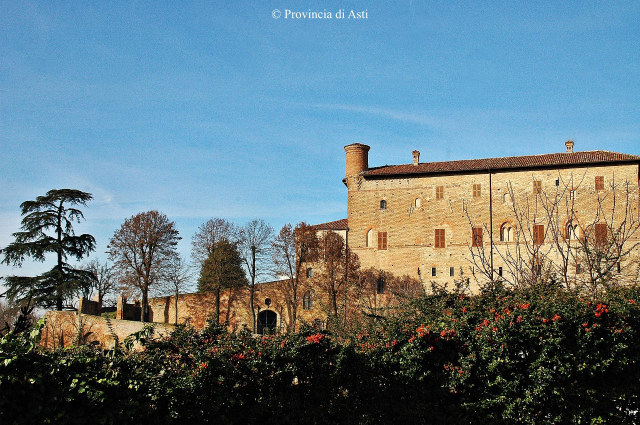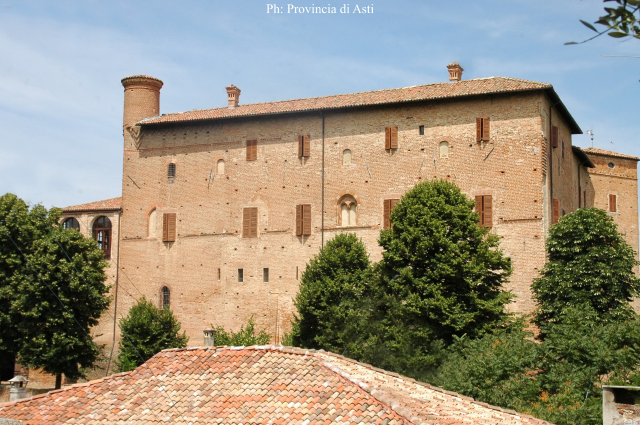Castle of the Marquises Faà (castello dei Marchesi Faà)
Highlights
Typical noble building built with bricks and land of the Monferrato.
The interiors are frescoed with themes of a biblical-religious nature.
• Availability: private property
The building has been privately owned by the Faà family for beyond four hundred years and is part of the “hybrid” structure typical of Monferrato castles.
In fact, in our lands the term “Castello” is used to indicate more than a real fortified building, a noble residence of feudal or noble style built on the remains of some primordial fortified area.
The Castle of Bruno stands compact and majestic, dominating the surrounding territories, forcefully inserting itself in the landscape context with which it creates a continuity of colors, as the Castle was built using almost exclusively local material, that is the land of Monferrato which was mixed in various shades of terracotta and brick such as to make the building like a spur of rock.
The architectural structure of the castle expresses, as a whole, that mixture of elements typical of the noble-noble palace and castle characteristics, reflecting the need for the Marquises Faà to give an answer to defensive and urban needs by giving a symbol of the social status of its owner.
This blend finds a moment of maximum expression on the western façade where on the first floor there is an elegant entrance preceded by a two-armed staircase facing a winter garden, while on the first floor we have exposed bricks, saw tooth decorations in the part below the roof and the two side hanging towers.
Furthermore, of great interest is the southern façade, especially in the play of the evolution of the windows from those that suggest a fortified use to those built later that are larger to let in sun and light and thus more for civilian use.
Of all the rooms, the one of greatest interest turns out to be the large hall known as the “Hall of Feasts,” finely frescoed with bright colors and intense tones that celebrate the triumph of the profane and pagan of a mythological nature.
In fact, the central theme is the Greek Olympus in which the gods find themselves in a boarding-house narrating their mutual adventures, as in a story that unfolds through the various depictions.
It is interesting to note that in this room a kind of censorship intervened at the end of the nineteenth century by Blessed Francesco Faà, who in his will left written that the heir should intervene on the most indecent nudity and change the fresco of Venus and Mars by the door.
Moreover, of great interest are the rooms called “Primo Salotto” and “Paradiso”, also finely frescoed with themes of a biblical-religious nature.
Not accessible to the public is the Secret Archive, where many rare editions of the fifteenth, sixteenth and seventeenth centuries appear as well as a collection of precious parchments.
Insights
Mondi medievali
https://www.mondimedievali.net/
- BRUNO (castello dei Faà)
https://www.mondimedievali.net/Castelli/Piemonte/asti/provincia000.htm#brunokas
See also
News from Bruno
- Discover the latest news posted on the website of the Municipality of Bruno
https://www.comune.bruno.at.it/it/news
Events in Bruno
- Discover the events posted on the website of the Municipality of Bruno
https://www.comune.bruno.at.it/it/events



